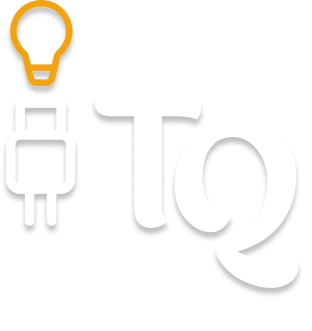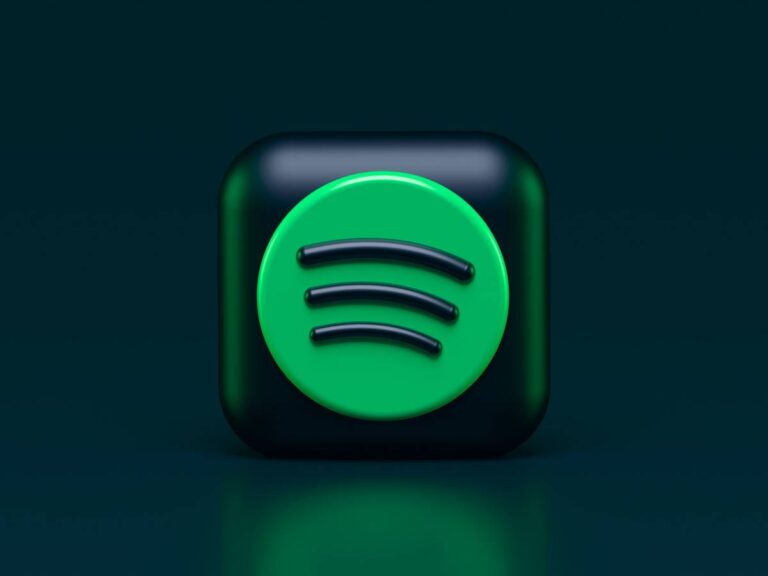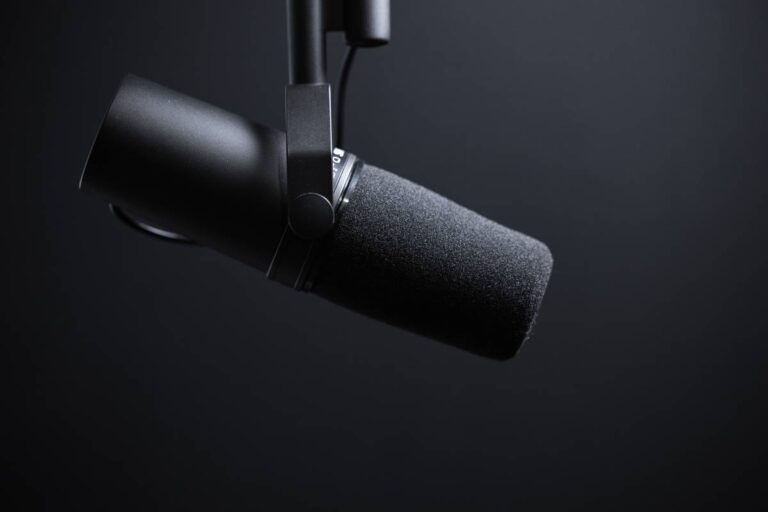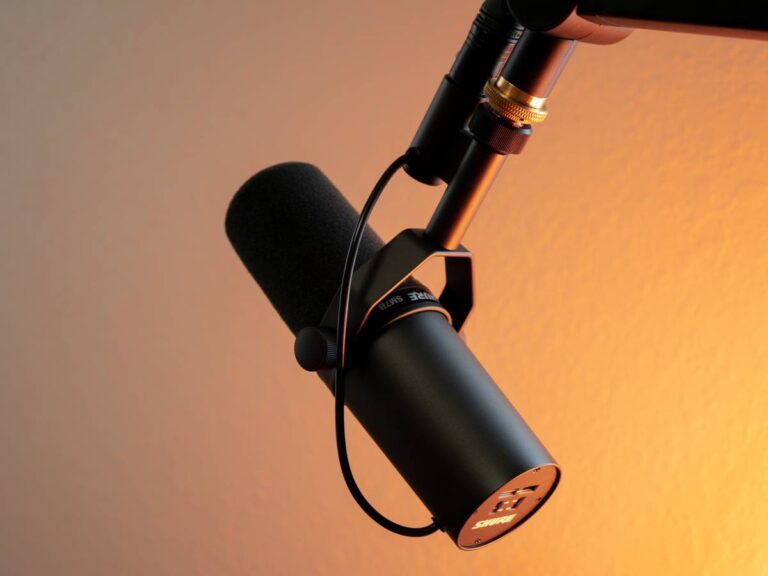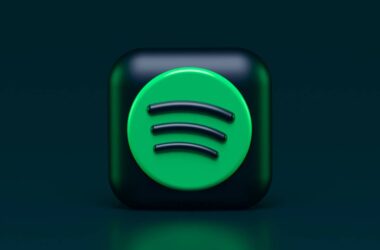Podcasting has grown into a major medium for content creation, with millions of episodes being produced and consumed globally. As a podcast creator, choosing the right platform is critical to reaching your audience, monetizing your content, and growing your brand. Among the leading platforms, Spotify and Apple Podcasts stand out due to their widespread popularity and robust feature sets.
But which one is better suited for your needs as a creator? In this review, we’ll dive deep into the key factors that you should consider when choosing between Spotify and Apple Podcasts. This comparison is focused entirely on what matters to creators, helping you make an informed decision that aligns with your goals. So, stick with us till the end to know our take on both of these platforms.
A great podcast comes from a great script, equipment, and delivery; you can refer to our podcast guides for all the help you need.
In this Review,
- 1. Platform Popularity and Audience Reach
- 2. Monetization Options
- 3. Analytics and Insights
- 4. Content Control and Flexibility
- 5. User Experience and Interface
- 6. Ease of Distribution
- 7. Discovery and Algorithm
- 8. Listener Experience (Indirect Impact)
- 9. Content Diversity
- 10. Integration with Other Platforms
- 11. Content Ownership and Licensing
- 12. Support for Independent Creators
- 13. Pricing Options for Creators
- Most Frequently Asked Questions [FAQs]
- Wrapping up: Apple Podcasts vs Spotify for Podcasters
In Short
The best platform for you will depend on your specific needs as a creator. If you’re looking for broad reach, advanced analytics, and flexible monetization, Spotify may be the way to go. However, if you value content control, a seamless experience within the Apple ecosystem, and the potential for premium content monetization, Apple Podcast could be your ideal platform.
1. Platform Popularity and Audience Reach
One of the first considerations, when you pick a podcast hosting platform, is to look for the potential reach it offers. Spotify has seen rapid growth in its podcasting segment and has over 365 million active users. It allows podcast creators to reach a large and varied audience. On the other hand, Apple Podcasts has been the gold standard in podcast distribution, and it boasts a dedicated user base that is particularly strong among iOS device users.
If your content appeals to a younger and more globally diverse audience, Spotify is a much better option due to its massive user base and strong growth in podcasting. However, if your content appeals to a more traditional podcast audience or talks about users who are heavily invested in the Apple ecosystem or news related to Apple, the Apple Podcast is a potential option.
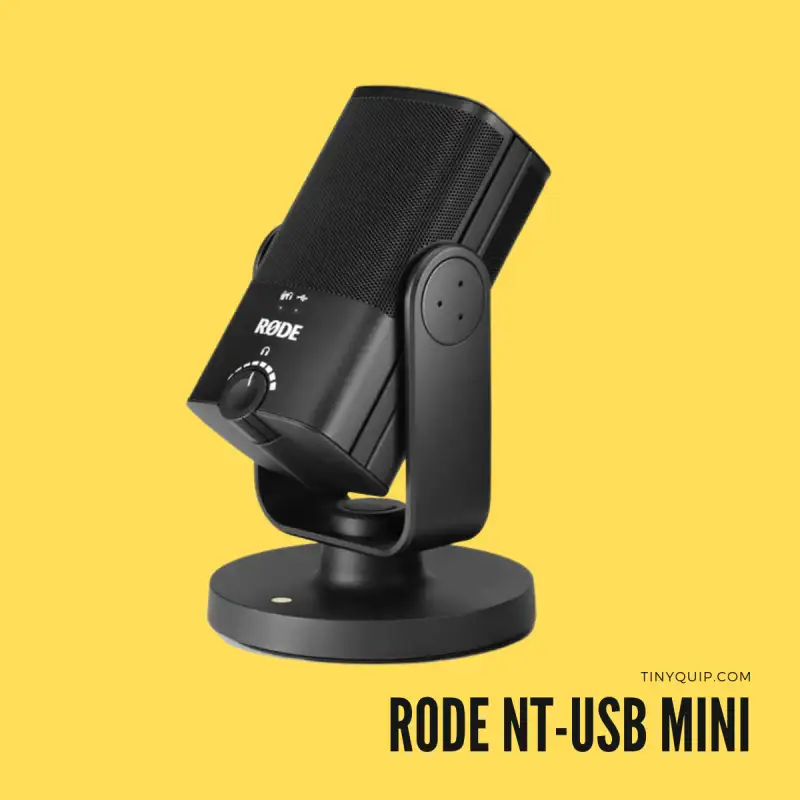
Your Audience is Yawning
Two things can make your audience sleepy while listening to your podcast. One is a boring script, and the second is poor audio.
Here are my favorite 10 best microphones for podcasters that will make you sound-sick professional. And also budget-friendly for beginners and professionals.
2. Monetization Options
As a creator, monetization is rewarding yourself for all the hard work and effort you put into creating quality content. Of course, you can build a brand out of your podcast audience and promote products and services, but that’s only one way if your hosting platform does not offer monetization options.
Until Spotify acquired Anchor, monetization was not available for podcast creators; of course, there was monetization over Spotify music but not for podcasts. After the acquisition of the Anchor Podcast service, Spotify opened up several monetization offers for podcast creators, including Ambassador Ads, listener donations, subscriptions, and automated ads from the Spotify Ad network.
| Monetization | Qualification | Availability |
|---|---|---|
| Ambassador Ads | 100 listeners on the podcast in the past 60 days, and an episode published for the same period | Invite only: US, UK, and Australia (Expanding soon to more countries) |
| Automated Ads | Invite only | Invite only: US, UK and Australia (Expanding soon to more countries) |
| Podcast Subscription | Show managed through Spotify for Podcasters | Available in 34 markets across North America, Europe, and Asia Pacific |
| Listener Support | Show managed through Spotify for Podcasters | US Only |
Meanwhile, creators are focused on creating quality and premium content on Apple Podcasts, where users are willing to pay for your content. Here, you can opt for a subscription model, allowing you to offer premium content to listeners for a fee. However, Apple takes a 30% cut from your revenue in the first year and a 15% cut for every following year.
In our opinion, both podcast platforms offer robust monetization options, and your choice depends on your content strategy. Spotify is preferable if you have a larger audience or greater number of listening numbers, as you get to earn from Ads. However, if your audience is niche-based and your users are really interested in your content, you can opt for Apple Podcasts for its premium subscription model service.
How to Earn from Podcasts? Alternatives to Podcast Ads
3. Analytics and Insights
Understanding your audience is key to growing your podcast, and this is where analytics come into play. For podcast creators, it is one of the most crucial factors when considering a host platform.
Spotify for Podcasters offers great detailed and actionable insights through its dashboard. Here, you can learn about listener demographics, streaming habits, and detailed performance of each episode. With this data, podcast creators can optimize their release times, develop marketing strategies, create content around the interests of the audience, and, finally, resonate with them.
On the other hand, Apple Podcasts Connect offers data on metrics like listening duration, average consumption, and listener retention. These data are comprehensive and sufficient and not overwhelming like Spotify, and creators can still make informed decisions, just not at the granular level.
If your content strategy is data-driven, Spotify for Podcasters is an excellent choice as it helps you with all the data to understand your audience. However, for podcast creators who primarily focus on creating content and have a strategy in place, Apple Podcasts does offer the essentials without overwhelming you.
4. Content Control and Flexibility
As a creator, the level of control you have over your content and how it’s distributed is crucial. You wouldn’t want to miss out on platforms where most of your potential audience is available. Meanwhile, if your content is available on a less niche-specific platform, you might not be taking full advantage of your content.
Spotify offers considerable flexibility, allowing creators to distribute podcasts not only through Spotify but across other platforms. This is advantageous when you wish to reach audiences on multiple platforms; however, Spotify does retain certain control over how content is presented and monetized.
Apple Podcasts also offers creators a high degree of control over their content. Here, you are in complete control of how your podcast content is distributed, and there are fewer restrictions compared to Spotify.
Of course, Apple’s approach is more creator-centric, allowing creators to focus on the content itself rather than how it’s managed on the platform. However, if you are looking for a more integrated solution that handles distribution across multiple channels and platforms with ease and flexibility, Spotify is a more beneficial choice.
How to Create a Paid Podcast Subscription on Spotify
5. User Experience and Interface
Platform user experience and interface are crucial factors as they determine how easily your audience can interact with your content.
Apple Podcasts have a straightforward and traditional interface, which is particularly well integrated with the Apple ecosystem. The interface is clean and functional, with a focus on usability and simplicity. Also, from the creator’s point of view, Apple Podcasts Connect is likewise easier and feels seamless and intuitive.
On the other hand, Spotify has a single app for music and podcasts. The design interface is sleek and modern and is both intuitive and visually appealing. However, in my personal opinion, it would be great if Spotify could have a separate app for music and podcasts, which would allow more flexibility and freedom. From the creator’s point of view, Spotify for Podcasters dashboard and tools are pretty clean, and you can easily manage and operate your shows/episodes without much hassle.
6. Ease of Distribution
Who wouldn’t wish their podcast had more listeners and followers? For that to happen, it is important that you repurpose or distribute your existing content to newer channels alongside creating newer content.
Spotify for Podcasters makes this distribution incredibly easier by pushing newer episodes or edits to older ones through the RSS feed. So, everything is automatically updated for every platform or channel where you have submitted your podcast’s RSS feed. Now, this one-stop approach simplifies the distribution process, saving creators a lot of time and making it more accessible.
However, with Apple podcasts, creators require a more manual submission process through Apple Podcasts Connect. While it is a straightforward process, it is still time-consuming and requires more effort than Spotify’s distribution approach. Of course, once you have your podcast live, Apple has a much more robust and strong distribution network for you to make your content more accessible.
How to Clean Your Podcast Microphones? A Handy Guide
7. Discovery and Algorithm
Discovery is a key component of growing your podcast, and both Spotify and Apple Podcasts take this approach differently.
In the case of Spotify, it leverages its powerful algorithms to recommend podcasts to users based on their listening habits. The algorithmic approach helps creators boost the podcast’s visibility, particularly if it aligns with the interests of a broad audience.
On the other hand, Apple Podcasts relies more on traditional methods of discovery, such as charts, categories, and editorial recommendations. While these methods can still drive significant traffic to your podcast, they might not offer the same level of personalized discovery that Spotify provides.
8. Listener Experience (Indirect Impact)
As a creator, you are producing content for your audience, and if your audience does not have a good listening experience, it can indirectly impact how users consume your content.
Spotify offers a seamless listening experience with features like offline listening, adjusting the speed, and automatic episode downloads. Such features not only enhance user engagement and satisfaction but also lead to higher listening retention for your podcast.
Apple is a lot good with user experiences, be it their devices or seamless communication between them. Likewise, Apple Podcasts allows a solid listener experience, and users can easily sync their podcasts across all their Apple devices, ensuring users can pick up where they left off, no matter which of their Apple devices they are using.
A positive listener experience is essential for building a loyal audience. If you’re looking for a platform that offers advanced features and a modern listening experience, Spotify might give you an edge. However, if your audience is heavily invested in the Apple ecosystem, Apple Podcasts ensures a seamless and consistent experience that could lead to better retention.
Podcast Cover Art Guide: Size, Logo, Dimensions, and More
9. Content Diversity
Your content diversity also plays a crucial role as it helps you pick a platform that resonates with the kind of content you create.
Spotify hosts a wide variety of content, including exclusive podcasts and music, making it a hub for both mainstream and niche audiences. This diversity can be advantageous if your podcast targets a broad audience or if you’re looking to experiment with different content formats.
Apple Podcasts also cater to a vast and diverse library as well. However, it is particularly strong in traditional podcasting genres like news, storytelling, and education. This makes it a great platform for creators who produce more conventional podcast content or who want to align themselves with well-established genres.
10. Integration with Other Platforms
Integration with other platforms enhances your ability to promote your podcast and engage with your audience. This is one of the crucial factors, as repurposing or sharing your older content can be helpful in building your audience. Always repurpose your older content, as it can be helpful in building your audience with existing content while you create newer ones.
Spotify integrates seamlessly with social media platforms, allowing you to easily share episodes and engage with listeners. For example, Spotify’s integration with Instagram enables users to share what they’re listening to directly to their stories, which can drive more traffic to your podcast. Instagram is only one of the examples; you can also share your podcasts on various other social channels and direct your newer audience to existing content.
Apple Podcasts is deeply integrated within the Apple ecosystem, allowing users to sync their podcasts across all Apple devices. This integration ensures a consistent experience for your listeners, which can lead to higher engagement and retention. However, in the case of Apple podcasts, you cannot find social sharing as appealing as what Spotify offers.
If social media engagement is a key part of your promotional strategy, Spotify’s integrations might offer more flexibility and reach. However, if you’re focused on providing a seamless experience within a single ecosystem, particularly for an audience that primarily uses Apple devices, Apple Podcasts’ integration is a significant advantage.
Podcast RSS Feed: Everything You Need to Know
11. Content Ownership and Licensing
Content ownership and licensing are important considerations for creators who are concerned about retaining control over their work. It is hurtful when creators don’t fully utilize content ownership and licensing features of the hosting platform.
Spotify has been known to secure exclusive deals with creators, which can be lucrative but might limit where and how your content can be distributed. While these deals can provide significant financial rewards, they often come with restrictions on how and where your content can be shared.
Apple Podcasts, on the other hand, generally allows for broader distribution and offers more control over content ownership. This means you can distribute your podcast across multiple platforms without the risk of exclusivity clauses limiting your options.
If you’re comfortable with the idea of exclusive content deals and the financial benefits they can bring, Spotify’s approach might be appealing. However, if retaining full ownership and the ability to distribute your content widely is important to you, Apple Podcasts offers more freedom and flexibility.
12. Support for Independent Creators
Both platforms offer support for independent creators, but they do so in different ways. This crucial factor helps new creators engage with the audience and build everything from scratch without the need for solid popularity at the start.
Spotify has been proactive in promoting indie creators through its Spotify for Podcasters program. These tools are designed to lower the barriers to entry for new creators, making it easier to start and grow a podcast without needing a large budget or technical expertise. Also, it is easier to build an audience through such a platform, which is more indulged with the newer generations.
Apple Podcasts has historically supported independent creators as well, though it tends to focus more on established podcasts. However, with the introduction of Apple Podcasts Subscriptions, there’s potential for indie creators to monetize their content directly and build a sustainable podcasting business.
If you’re an independent creator just starting out, Spotify’s tools and programs might provide a more accessible and supportive environment. However, if you’re already established or if you’re looking to monetize a niche audience through subscriptions, Apple Podcasts offers strong support, particularly with its new subscription model.
13. Pricing Options for Creators
Finally, let’s consider the pricing options available to creators.
Spotify offers its Podcasters platform for free, allowing you to create, host, and distribute your podcast without any upfront costs. This is particularly appealing for new creators who may not have a budget for hosting. Spotify also offers monetization options through ads and listener donations, providing multiple revenue streams. However, Spotify always takes certain cuts before the revenue is reflected on your account. Honestly, no one knows how Spotify calculates these rates and how much percentile they take from your share as a platform or service fee.
Apple Podcasts does not charge creators to host or distribute their podcasts, but it does take a 30% cut of any subscription revenue generated through Apple Podcasts Subscriptions. While this might seem steep, the revenue-sharing model becomes more favorable after the first year, with Apple’s cut dropping to 15%.
For creators on a tight budget or those just starting out, Spotify’s hosting and multiple monetization options make it an attractive choice. However, if you’re looking to build a premium podcasting brand with a focus on subscription revenue, Apple Podcasts’ model, despite the initial revenue sharing, could offer significant long-term benefits.
How to Remove Podcast Episodes from Spotify?
Most Frequently Asked Questions [FAQs]
Spotify is ideal for reaching a broad, international audience due to its massive and diverse user base of over 365 million active users, especially among younger listeners. On the other hand, Apple Podcasts is a strong choice if your content appeals to a more traditional podcast audience or focuses on topics relevant to the Apple ecosystem, as it has a loyal and dedicated user base, particularly among iOS users.
Spotify is known for offering detailed and actionable insights, which makes it great for creators who rely on data-driven strategies. The platform provides comprehensive data on listener demographics, habits, and episode performance. Meanwhile, Apple Podcasts offers essential analytics focused on key metrics like listening duration and retention, which is more suitable if your primary focus is on content creation rather than in-depth data analysis.
On Spotify, creators enjoy a good level of flexibility in distributing their content across multiple platforms, though there are some controls over content presentation and monetization. Apple Podcasts, however, provides more control over content distribution with fewer restrictions, making it a more creator-centric option.
Spotify offers a sleek and modern interface that is both intuitive and visually appealing, making it easier for creators to manage their podcasts. On the other hand, Apple Podcasts provides a straightforward and traditional interface that is particularly well-integrated with the Apple ecosystem.
Before You Leave
Get Our Prime Content Delivered to your Inbox for Free!! Join the Ever-Growing Community… Right Now.
Give this article a quick share,
Wrapping up: Apple Podcasts vs Spotify for Podcasters
Choosing between Spotify and Apple Podcasts as a podcast creator is not a decision to be taken lightly. Each platform offers distinct advantages depending on your goals, audience, and content strategy.
Spotify shines with its modern interface, extensive global reach, and strong support for independent creators through its platform. It’s an excellent choice for creators looking to maximize discovery, leverage data-driven insights, and tap into a young, diverse audience. Apple Podcasts, on the other hand, remains a powerhouse in the podcasting world, with a legacy that provides credibility and a dedicated audience. Its deep integration within the Apple ecosystem, coupled with its straightforward content control and robust subscription model, makes it a compelling option for creators focused on premium content and long-term brand building.
Ultimately, the best platform for you will depend on your specific needs as a creator. If you’re looking for broad reach, advanced analytics, and flexible monetization, Spotify may be the way to go. However, if you value content control, a seamless experience within the Apple ecosystem, and the potential for premium content monetization, Apple Podcast could be your ideal platform.
As the podcasting landscape continues to evolve, it’s essential to stay informed about the latest features and trends on both platforms. Whichever you choose, focus on creating high-quality content that resonates with your audience, and the platform will serve as a powerful tool to amplify your voice and thoughts.
If you like this article, do give this a quick share on your social media handles and do tag us. Also, join our Telegram channel, Facebook page, and Twitter to never miss a quick update.
